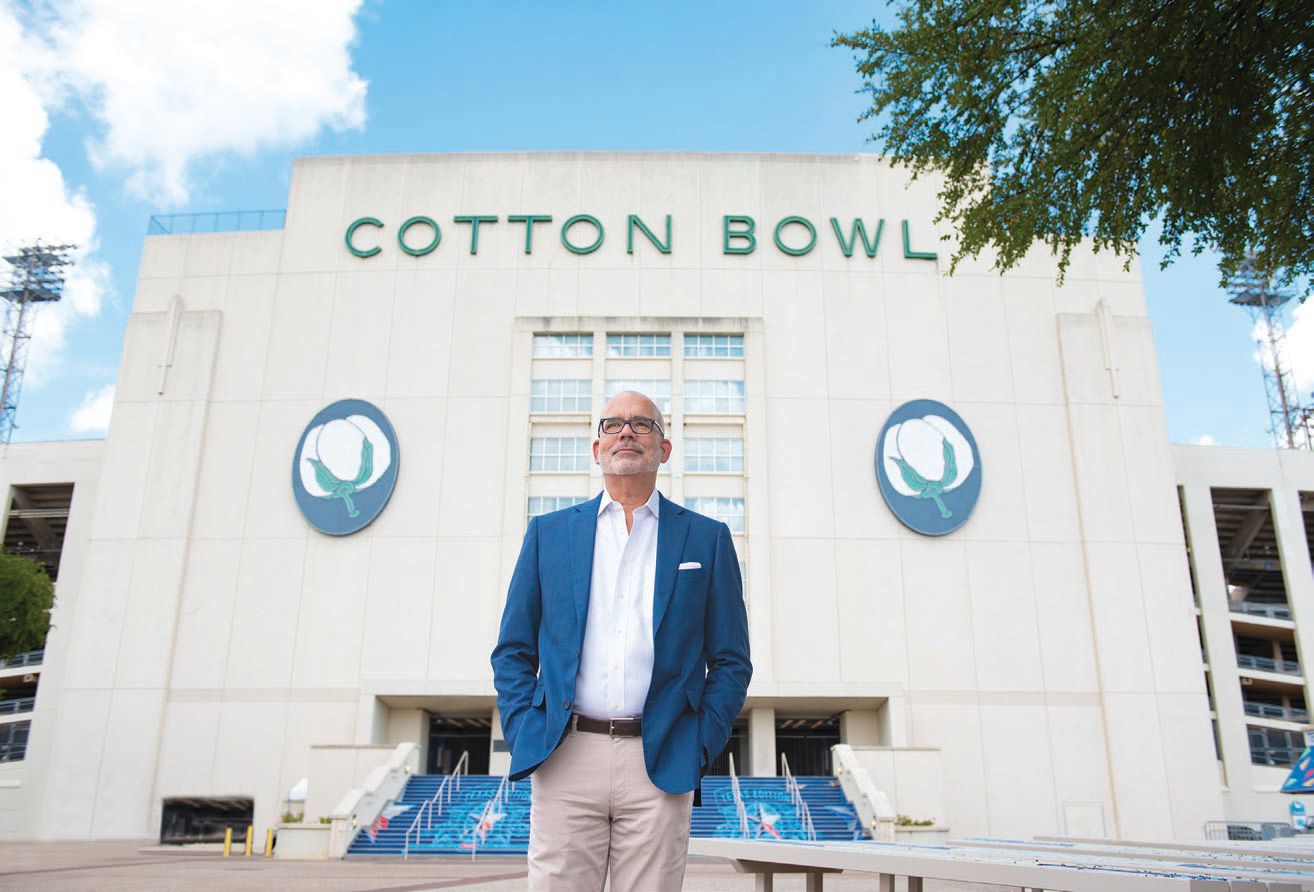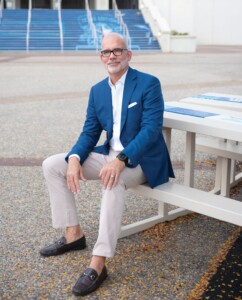
Oak Cliff native Bryan Trubey is behind many of our favorite sports and entertainment venues around the world. Now working with Overland Partners (www.overlandpartners.com) in San Antonio, the architect launched his sports career over 30 years ago and has worked on large-scale projects like the National Stadium in Hong Kong, the recently completed SoFi stadium in L.A. and AT&T Stadium and Globe Life Field right here in Texas. We recently caught up with Trubey to give us some insight into the biz and what we can expect from him next.
BY ERIN KAIN
How do you start to tackle a big project like an arena?
Research! When we started working with the Cowboys, the Rams, the Vikings, the Colts, we always do superdeep research into the history of those franchises. That starts to give us what is essentially a personality, and that allows us to create a physical thing that looks like them and no one else.
Can you give us an example?
Every brand is totally unique, and that’s part of the reason we do the really deep research. The Vikings are a really good example. A lot of people look at the final building— which has won quite a few design awards—and some see a Viking ship, some see a Viking longhouse and some see an ice shard. All those things skew positive. And the fact that you can see all those things is proof that we took some symbols, some patterns, some shapes that were a part of that culture, and we were able to imbue that into the building itself in a way that makes it feel perfect for that team.
How do these venues add to the cities they’re housed in?
The Vikings arena, much like the Colts arena, is built literally in the foreground of downtown. So you have all the existing assets—a few billion dollars’ worth of built skyline—right behind the site. The buildings we were doing for both of those cities and teams were even more definitive in terms of the perceived city after that. On television you see the Vikings’ venue and the downtown in the background, and the same with the Colts, so it became really a redefining element for their entire city.
What are some of your biggest influences?
I think I’ve always been focused on interpretive or abstract thinking. I’ve never had a personal style; I think that’s a thing that our profession has kind of been working through. There’s plenty of architects that have a very distinctive style, and when you go to hire that architect, you’re buying into their view rather than hiring them to help you. It’s always more interesting to me to do the research and understand how to produce something totally and absolutely unique. Context is what it’s called in the architectural community. It’s understanding context and then building something that’s responsive to or expansive to the context.
Tell us about some of your current projects. I know you’re working on Fair Park.
We are—talk about an amazing project! Fair Park is one of those that I think people are going to come to understand the real value of shortly. There’s nothing like it anywhere on the planet. It’s 277 acres of park that has a whole series of venues in it—some are exhibit halls, performance spaces, the Cotton Bowl, the Coliseum, the Band Shell. I think when we are able to renovate a significant amount of those venues, we’re going to see Fair Park emerge as one of our most visible national and international attractions for the whole region. AT&T Stadium was just announced as the host for the World Cup in 2026.
That’s got to be pretty exciting.
It is. We’re hoping Fair Park plays a large part in that too. We’re trying to get the International Broadcast Center in Fair Park in addition to getting the game in AT&T indoors, and maybe a game
at the Cotton Bowl.
Any predictions for future architecture trends?
I think we’re going to be setting them as we have the last 20 years. Because that’s something we’re junkies for, innovation. We’re not shy about putting our ideas out there, and I’m lucky enough to work with some of the most visionary owners in sports and entertainment. That’s always a great combination when you can work with guys like Stan Kroenke, Jerry Jones, Ray Davis and Dallas’ own Lamar Hunt, now gone but one of the most visionary owners in sport I think ever lived.
I know you grew up in Dallas and you’ve had a heavy hand in both hospitality and sports, but who do you root for?
This is a very delicate question. I’m a very broad sports fan—it’s hard not to be a fan of any team that you work with. It’s similar to asking me my favorite project; it’s sort of like choosing between your children. So I always say the next one, because we’re always going to do a better job on the next one.
Read the original article in Modern Luxury Dallas.
Creating places that can’t be built by anyone else
…for anyone else.

